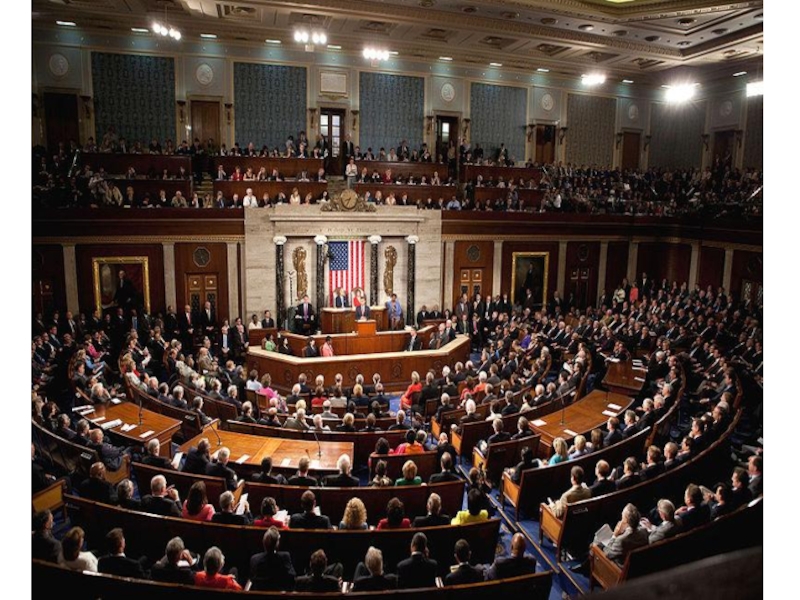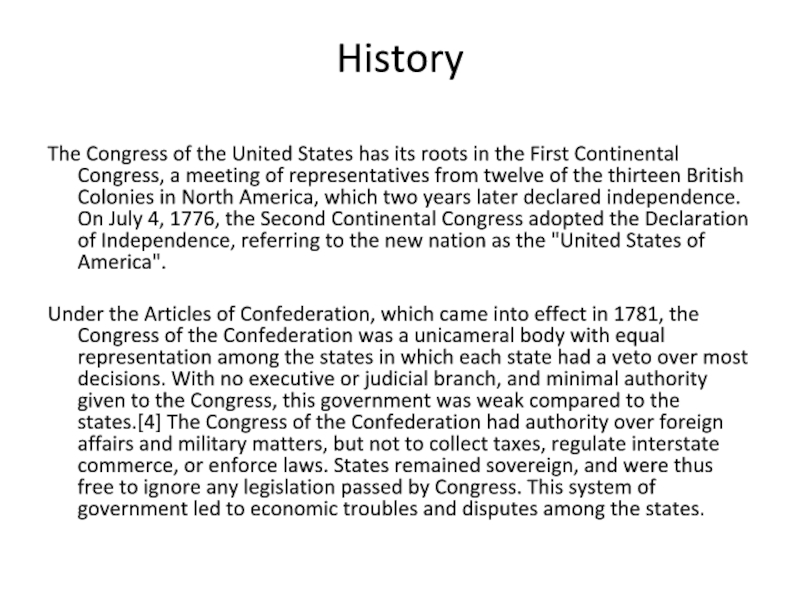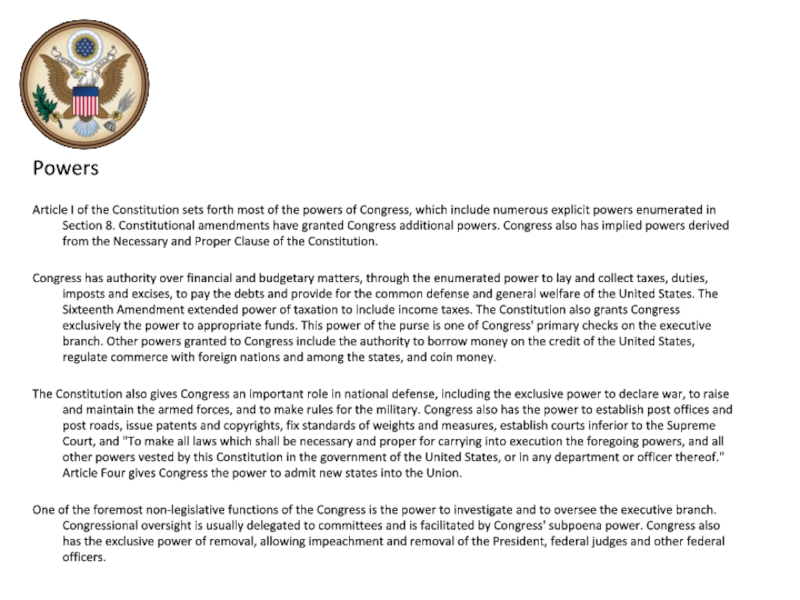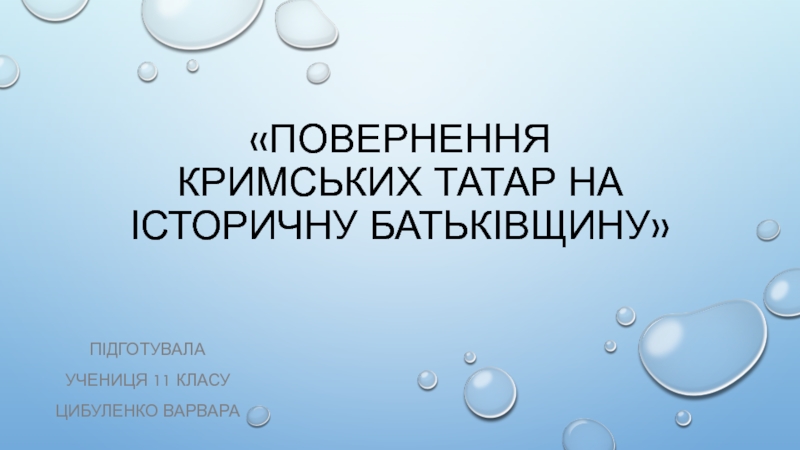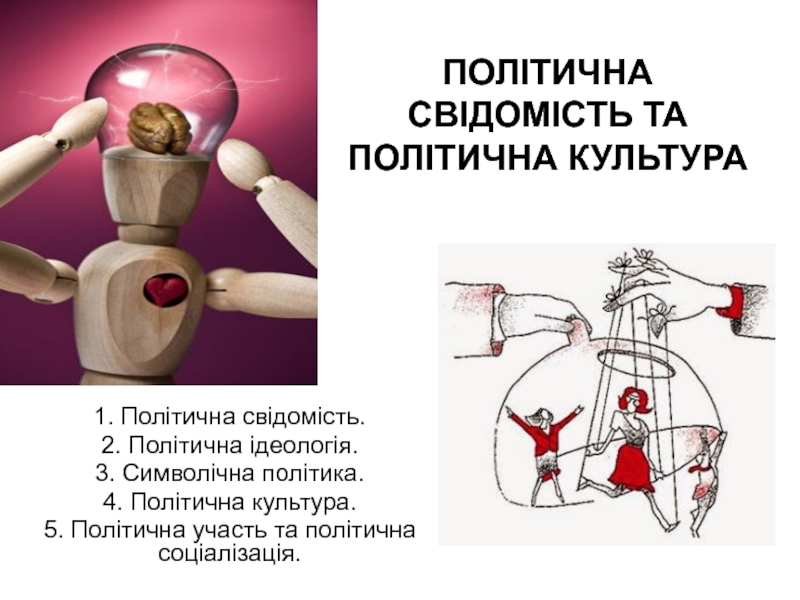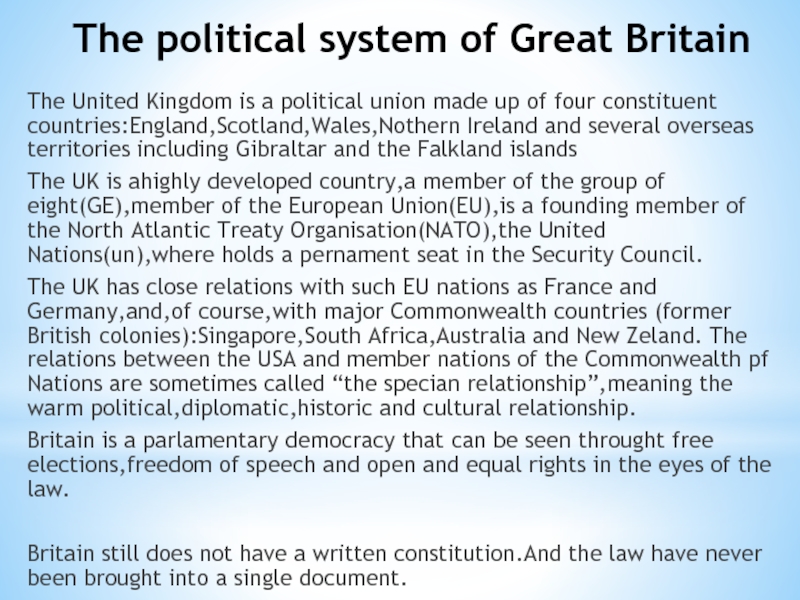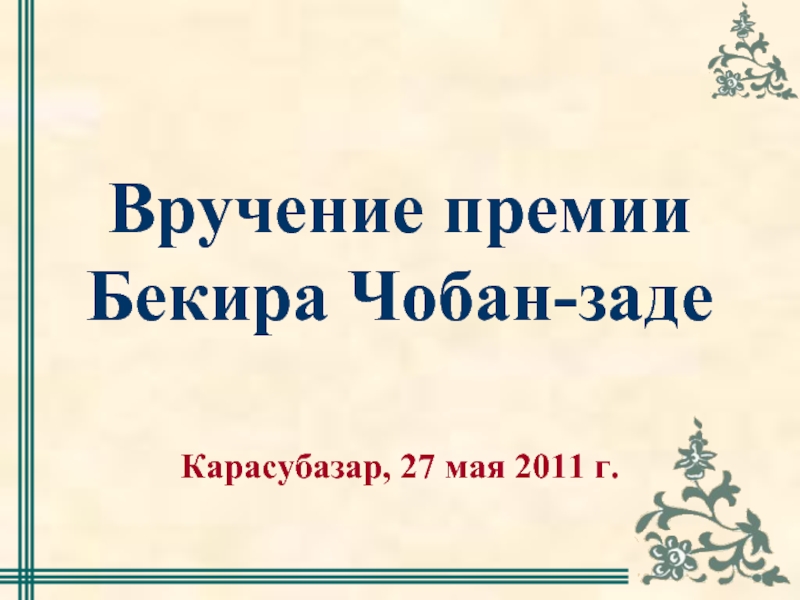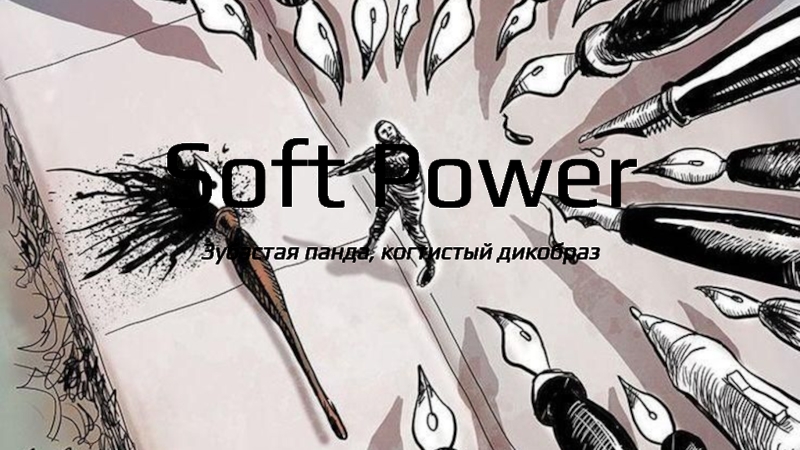the federal government of the United States of America, consisting of the Senate and the House of Representatives. The Congress meets in the United States Capitol in Washington, D.C.
Both senators and representatives are chosen through direct election. Each of the 435 members of the House of Representatives represents a district and serves a two-year term. House seats are apportioned among the states by population. The 100 Senators serve staggered six-year terms. Each state has two senators, regardless of population. Every two years, approximately one-third of the Senate is elected at a time. Re-election rates for incumbents often exceed 90%.
Article I of the Constitution vests all legislative power in Congress. The House and Senate are equal partners in the legislative process (legislation cannot be enacted without the consent of both chambers); however, the Constitution grants each chamber some unique powers. The Senate is uniquely empowered to ratify treaties and to approve top presidential appointments. Revenue-raising bills must originate in the House of Representatives, which also has the sole power of impeachment, while the Senate has the sole power to try impeachment cases.
The term Congress is also used to refer to a particular meeting of the national legislature, reckoned according to the terms of representatives. Therefore, a "Congress" covers two years. The current 111th Congress convened on January 6, 2009
- Главная
- Разное
- Дизайн
- Бизнес и предпринимательство
- Аналитика
- Образование
- Развлечения
- Красота и здоровье
- Финансы
- Государство
- Путешествия
- Спорт
- Недвижимость
- Армия
- Графика
- Культурология
- Еда и кулинария
- Лингвистика
- Английский язык
- Астрономия
- Алгебра
- Биология
- География
- Детские презентации
- Информатика
- История
- Литература
- Маркетинг
- Математика
- Медицина
- Менеджмент
- Музыка
- МХК
- Немецкий язык
- ОБЖ
- Обществознание
- Окружающий мир
- Педагогика
- Русский язык
- Технология
- Физика
- Философия
- Химия
- Шаблоны, картинки для презентаций
- Экология
- Экономика
- Юриспруденция
United States Congress презентация
Содержание
Слайд 3History
The Congress of the United States has its roots in the
First Continental Congress, a meeting of representatives from twelve of the thirteen British Colonies in North America, which two years later declared independence. On July 4, 1776, the Second Continental Congress adopted the Declaration of Independence, referring to the new nation as the "United States of America".
Under the Articles of Confederation, which came into effect in 1781, the Congress of the Confederation was a unicameral body with equal representation among the states in which each state had a veto over most decisions. With no executive or judicial branch, and minimal authority given to the Congress, this government was weak compared to the states.[4] The Congress of the Confederation had authority over foreign affairs and military matters, but not to collect taxes, regulate interstate commerce, or enforce laws. States remained sovereign, and were thus free to ignore any legislation passed by Congress. This system of government led to economic troubles and disputes among the states.
Under the Articles of Confederation, which came into effect in 1781, the Congress of the Confederation was a unicameral body with equal representation among the states in which each state had a veto over most decisions. With no executive or judicial branch, and minimal authority given to the Congress, this government was weak compared to the states.[4] The Congress of the Confederation had authority over foreign affairs and military matters, but not to collect taxes, regulate interstate commerce, or enforce laws. States remained sovereign, and were thus free to ignore any legislation passed by Congress. This system of government led to economic troubles and disputes among the states.
Слайд 4Powers
Article I of the Constitution sets forth most of the powers
of Congress, which include numerous explicit powers enumerated in Section 8. Constitutional amendments have granted Congress additional powers. Congress also has implied powers derived from the Necessary and Proper Clause of the Constitution.
Congress has authority over financial and budgetary matters, through the enumerated power to lay and collect taxes, duties, imposts and excises, to pay the debts and provide for the common defense and general welfare of the United States. The Sixteenth Amendment extended power of taxation to include income taxes. The Constitution also grants Congress exclusively the power to appropriate funds. This power of the purse is one of Congress' primary checks on the executive branch. Other powers granted to Congress include the authority to borrow money on the credit of the United States, regulate commerce with foreign nations and among the states, and coin money.
The Constitution also gives Congress an important role in national defense, including the exclusive power to declare war, to raise and maintain the armed forces, and to make rules for the military. Congress also has the power to establish post offices and post roads, issue patents and copyrights, fix standards of weights and measures, establish courts inferior to the Supreme Court, and "To make all laws which shall be necessary and proper for carrying into execution the foregoing powers, and all other powers vested by this Constitution in the government of the United States, or in any department or officer thereof." Article Four gives Congress the power to admit new states into the Union.
One of the foremost non-legislative functions of the Congress is the power to investigate and to oversee the executive branch. Congressional oversight is usually delegated to committees and is facilitated by Congress' subpoena power. Congress also has the exclusive power of removal, allowing impeachment and removal of the President, federal judges and other federal officers.
Congress has authority over financial and budgetary matters, through the enumerated power to lay and collect taxes, duties, imposts and excises, to pay the debts and provide for the common defense and general welfare of the United States. The Sixteenth Amendment extended power of taxation to include income taxes. The Constitution also grants Congress exclusively the power to appropriate funds. This power of the purse is one of Congress' primary checks on the executive branch. Other powers granted to Congress include the authority to borrow money on the credit of the United States, regulate commerce with foreign nations and among the states, and coin money.
The Constitution also gives Congress an important role in national defense, including the exclusive power to declare war, to raise and maintain the armed forces, and to make rules for the military. Congress also has the power to establish post offices and post roads, issue patents and copyrights, fix standards of weights and measures, establish courts inferior to the Supreme Court, and "To make all laws which shall be necessary and proper for carrying into execution the foregoing powers, and all other powers vested by this Constitution in the government of the United States, or in any department or officer thereof." Article Four gives Congress the power to admit new states into the Union.
One of the foremost non-legislative functions of the Congress is the power to investigate and to oversee the executive branch. Congressional oversight is usually delegated to committees and is facilitated by Congress' subpoena power. Congress also has the exclusive power of removal, allowing impeachment and removal of the President, federal judges and other federal officers.

